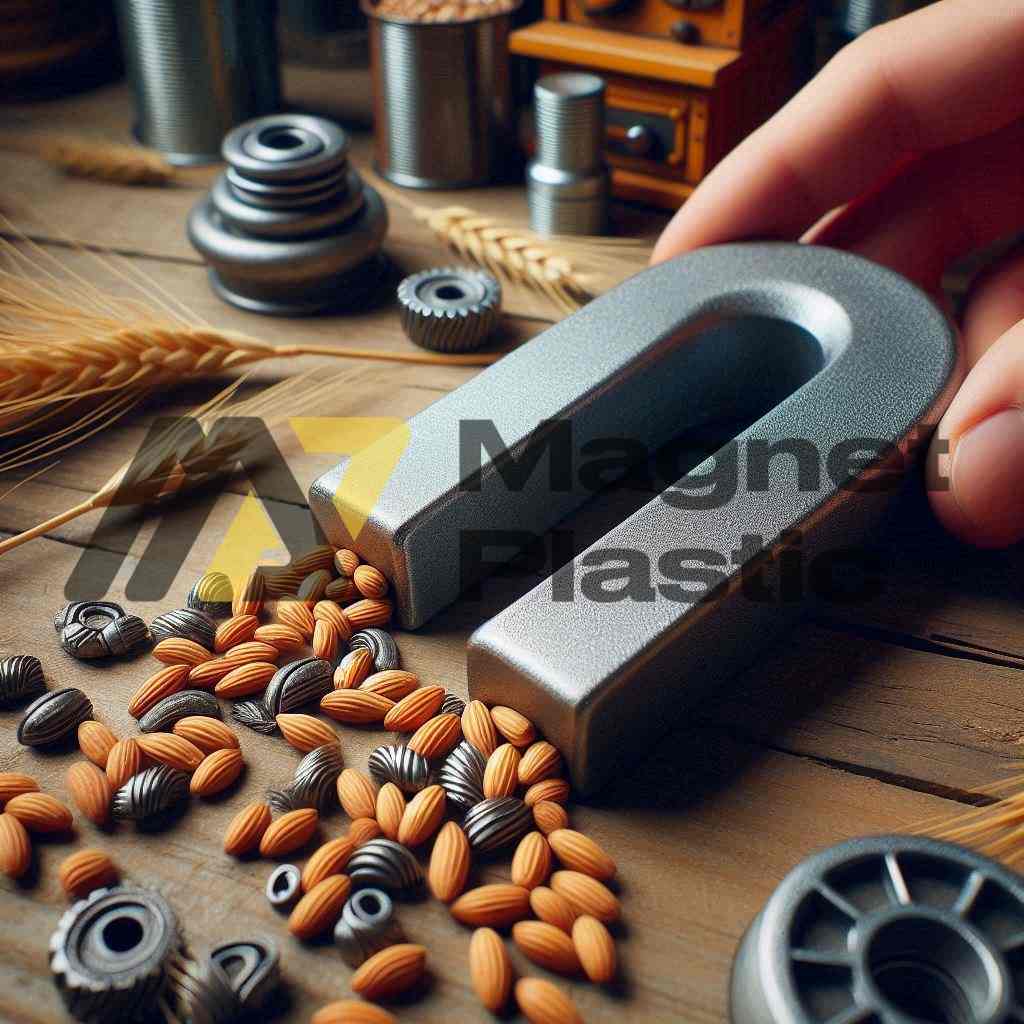Magnets for Metal Removal in Cereal Milling
Cereal milling is an essential operation in the food industry, where grains are transformed into flour and other commodities. During this process, it is common for grains to become contaminated with metal particles that can compromise the quality of the final product. This is where magnets for metal removal in cereal milling are essential, as they guarantee a clean and safe product, ensuring a quality standard that meets market demands.
How Do Metal Particles Reach the Milling Process?
In the cereal milling industry, the risks of metal contamination are high due to multiple factors. These fragments can come from the machinery used, from the wear of equipment in contact with the grains to the transport of raw materials. It is also possible that these metals are found in the grains from the harvest. Steel or iron particles can sneak into the process and, if not removed, can damage the machinery, reduce its durability and, most importantly, pose a health risk to the end consumer.
The Role of Metal Removal Magnets in Cereal Milling
Metal removal magnets in cereal milling play a key role by capturing metal fragments before they can reach the final product. By strategically placing them at different stages of the process, these magnets ensure that the cereals and grains being processed are free of metal particles. In addition, the magnets reduce maintenance costs by protecting the machines from unnecessary wear and tear and ensuring their optimal operation.
Types of Magnets Used in Cereal Processing
There are several types of magnets for metal removal in cereal milling, which are selected based on the specific needs of each processing plant:
Plate Magnets: These flat magnetic surfaces are useful for capturing metal fragments found on the surface of cereals. They are strategically placed along the production line, blocking the passage of metal particles to later stages.
Grid Magnets: Made up of grid-shaped magnetic rods, they are installed in hoppers and ducts through which bulk grains pass. The metal particles adhere to these grids, allowing the grain to continue its course without contaminants.
Magnetic Drum Separators: These are equipment with capacity for large processing volumes. Magnetic drums offer continuous separation of metal particles at high-speed points, ensuring uninterrupted production.
Benefits of Magnets for Metal Removal in Cereal Milling
The installation of magnets for metal removal in cereal milling provides numerous operational advantages, guaranteeing both product safety and process efficiency:
Product Quality: By removing metal particles, it is ensured that the final product is free of contaminants, which supports food quality and safety.
Machine Protection: Magnets act as a barrier that protects machines from metal damage, which reduces repair costs and extends the life of equipment.
Cost Optimization: Preventing equipment damage and reducing the risk of returns or claims for contaminated products translates into a more profitable and efficient operation.
Regulatory Compliance: The high quality standards of the food industry demand the removal of metal contaminants, and magnets are essential to comply with these regulations.
Conclusion
Magnets for metal removal in grain milling are indispensable tools to ensure safe and quality processing. With their ability to capture and separate metal particles, these magnets improve product safety, optimize machine use, and contribute to efficient and profitable production. As the food industry moves towards a safer and more sustainable future, the use of magnets in grain milling is positioned as a key investment to meet the increasing quality demands in an increasingly competitive market.
